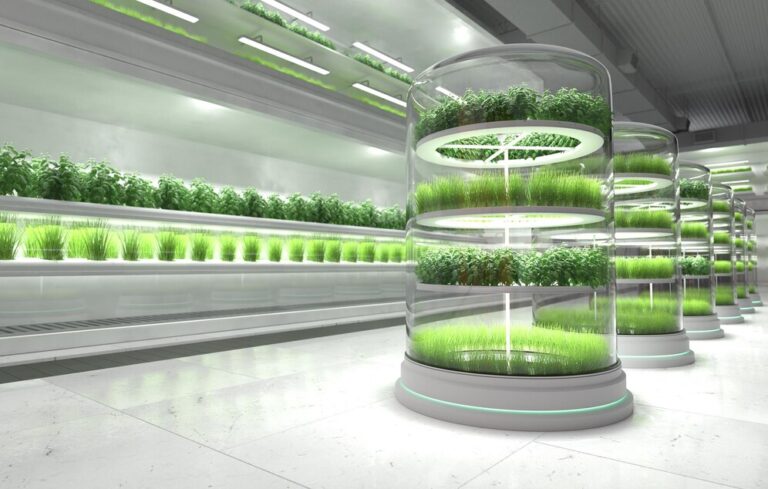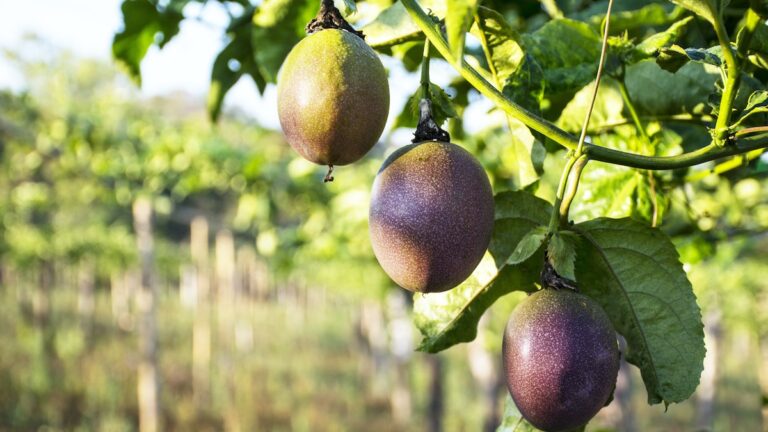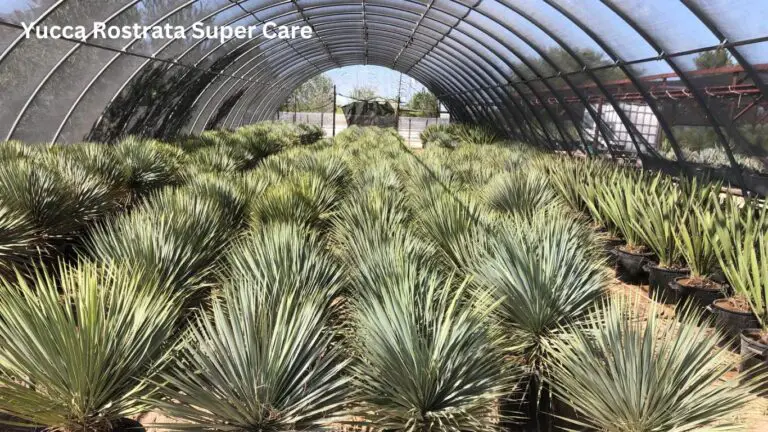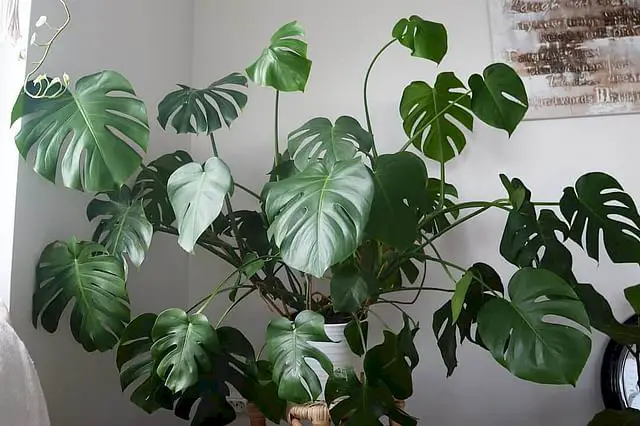Papaya Tree Tips: Growing Prolific Papayas
Table of Contents
Understanding the Basics of Papaya Trees
Papaya trees, scientifically known as Carica papaya, are tropical fruit-bearing plants that are native to Central and South America. These fast-growing trees have a single stem topped with large, lobed leaves. The most distinguishing feature of the papaya tree is its unique and delicious fruit, which comes in a variety of shapes, sizes, and colors.
Papaya trees are known for their ability to thrive in warm and tropical climates, with temperatures ranging from 75 to 95 degrees Fahrenheit. They require a minimum of six hours of direct sunlight per day to ensure optimal growth and fruit production. Additionally, papayas prefer well-draining soil that is rich in organic matter.
When it comes to caring for a papaya tree, it is important to understand its water and fertilization needs. Papayas require regular and consistent watering, especially during the hot and dry seasons. However, it is crucial to avoid overwatering, as it can lead to root rot and other diseases. Fertilizing papaya trees with a balanced blend of nitrogen, phosphorus, and potassium will promote healthy growth and fruit yield.
In order to maintain the health and vigor of your papaya tree, regular pruning and training are essential. Pruning helps to remove dead or diseased branches, while training ensures a strong and sturdy framework for the tree. Additionally, protecting papaya trees from common pests and diseases is crucial to prevent major damage and ensure a successful harvest.
Understanding the basics of papaya trees is crucial for anyone wishing to grow these tropical treasures in their garden. By providing the right growing conditions, proper care, and protection against threats, home gardeners can enjoy the sweet rewards of fresh and homegrown papayas.
Selecting the Right Variety for Your Climate
Selecting the right variety of papaya for your specific climate is crucial for the success of your cultivation. Papaya trees thrive in tropical and subtropical climates, where temperatures range between 70°F and 90°F (21°C – 32°C). However, it’s crucial to consider the specific conditions of your area, including temperature fluctuations, humidity levels, and soil characteristics.
When choosing a papaya variety, it’s essential to consider its tolerance to temperature extremes. Some varieties, such as the Hawaiian Solo, Red Lady, and Maradol, are more resilient to colder temperatures and can withstand occasional dips below 50°F (10°C). These varieties are ideal for regions with mild winters or unpredictable weather patterns.
On the other hand, if you live in an area with scorching summers, selecting heat-tolerant varieties like the Tainung or Waimanalo can ensure your papaya trees thrive even in high temperatures. These varieties have built-in mechanisms to withstand heat stress, allowing them to continue fruiting during hot and dry spells.
It’s also important to assess the humidity levels in your region. Some varieties, like the Caribbean Red and Mexican Red, are well-suited for humid climates, as they have higher resistance to diseases that thrive in moisture-rich conditions. Conversely, if you live in an arid environment, choosing drought-tolerant varieties such as the Solo Sunrise or Kapoho can help your papaya trees endure extended periods of low rainfall.
In conclusion, selecting the right papaya variety tailored to your climate is essential for successful cultivation. By considering temperature tolerance, heat resistance, humidity levels, and drought resistance, you can ensure optimal growth and fruit production in your papaya orchard.
Here is a table that lists some of the papaya varieties and their suitable climate conditions based on the web search results.
| Variety | Climate |
|---|---|
| Coorg Honey Dew | Subtropical, mild winters, no frost |
| Pusa Delicious | Subtropical, mild winters, no frost |
| Pusa Majesty | Subtropical, mild winters, no frost |
| Pusa Nanha | Subtropical, mild winters, no frost |
| Pusa Giant | Subtropical, mild winters, no frost |
| Washington | Tropical, warm and humid, no frost |
| Solo | Tropical, warm and humid, no frost |
| Sunrise Solo | Tropical, warm and humid, no frost |
| Red Lady | Tropical, warm and humid, no frost |
| Mexican | Tropical, warm and humid, no frost |
Preparing the Soil for Planting Papaya Trees
When it comes to growing healthy and productive papaya trees, preparing the soil is a crucial step that should not be overlooked. The success of your papaya plantation largely depends on the quality of the soil, as it directly affects the tree’s ability to establish strong roots and uptake essential nutrients.
To start, it is important to choose a well-draining soil that retains moisture while also allowing excess water to escape. Papaya trees thrive in sandy loam or loamy soils, which provide a good balance of drainage and water-holding capacity. A soil test can be conducted to determine the pH level and nutrient content of the soil, helping you make any necessary adjustments to create optimal conditions for your papaya trees. Additionally, adding organic matter such as compost or well-rotted manure can improve soil structure and fertility, ensuring the papaya trees have access to the nutrients they need for healthy growth. By preparing the soil properly, you are setting a strong foundation for your papaya trees to flourish.
Choosing an Ideal Location for Your Papaya Tree
To ensure the optimal growth and productivity of your papaya tree, choosing the right location is crucial. Papayas thrive in warm and tropical climates, preferring temperatures around 75 to 90 degrees Fahrenheit. Frost and freezing temperatures can severely damage or even kill the tree, so it’s essential to select a site that offers protection from cold winds and temperature fluctuations.
In addition to temperature considerations, papaya trees require plenty of sunlight to flourish. They should be planted in an area that receives at least six to eight hours of direct sunlight daily. Without adequate sunlight, the tree may struggle to photosynthesize and may produce fewer fruits or experience stunted growth. Therefore, it’s essential to select a location that provides ample sunshine throughout the day.
Furthermore, papaya trees require well-drained soil that is rich in organic matter. They prefer soil with a slightly acidic to neutral pH level, ideally between 6.0 and 7.0. Avoid areas with heavy clay or compacted soil, as these conditions can hinder root development and lead to poor drainage. Instead, choose a location with loamy or sandy soil that allows for proper water percolation and nutrient absorption.
Consider these factors when selecting the ideal location for your papaya tree to create the best possible environment for healthy growth and abundant fruit production. Keep in mind that different varieties may have specific climate preferences, so it’s wise to research and select a variety that is well-suited to your particular region and its climate conditions. With the right location and care, your papaya tree will flourish and provide you with delicious fruits to enjoy.
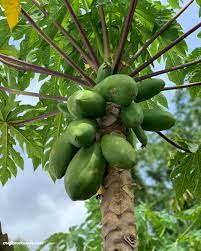
Planting and Transplanting Techniques for Papaya Trees
Planting and transplanting techniques for papaya trees are essential for ensuring their successful growth and establishment. When it comes to planting papaya trees, it is important to choose a sunny and well-drained location with good air circulation. The soil should be fertile, rich in organic matter, and have a pH level between 6 and 6.5. Prior to planting, the soil should be prepared by incorporating compost or well-rotted manure to improve its nutrient content and drainage.
To plant a papaya tree, dig a hole that is twice the size of the root ball and loosen the surrounding soil. Gently remove the tree from its container and place it in the hole, ensuring that the top of the root ball is level with the surrounding soil. Backfill the hole with soil, firming it gently around the tree. Water the tree thoroughly after planting to help settle the soil and reduce any air pockets around the roots.
Transplanting papaya trees can be done if necessary, but it is generally recommended to avoid unnecessary transplanting as it can stress the trees. However, if transplanting is required, it is best done during the cooler months when the tree is dormant. Carefully dig around the root system, taking care not to damage the roots. Transplant the tree to its new location, ensuring that the hole is large enough to accommodate the entire root system. Follow the same planting techniques mentioned earlier, and water the tree thoroughly after transplanting to aid in root establishment.
Mastering the proper planting and transplanting techniques for papaya trees is vital to ensure their healthy growth and development. By providing the right conditions and following these guidelines, gardening enthusiasts can enjoy the beauty and benefits of this tropical fruit tree in their own backyard.
Watering and Irrigation Guidelines for Healthy Papayas
Proper watering and irrigation techniques are crucial for maintaining healthy papaya trees and promoting optimal growth and fruit yield. Papayas have specific water requirements that must be met to ensure their well-being.
When it comes to watering your papaya trees, it’s important to strike a balance. Overwatering can lead to root rot and other fungal diseases, while underwatering can cause stress and hinder growth. Aim for deep watering sessions to encourage deep root development. This can be achieved by providing a slow and deep watering once a week, ensuring the water penetrates the soil deeply. However, it’s crucial to monitor the moisture levels to avoid excessive dryness between watering sessions. Regularly check the soil’s moisture content by inserting your finger into the soil up to the second knuckle. If it feels dry, it’s time to water.
Irrigation systems are a convenient way to ensure consistent and adequate moisture for your papaya trees. Drip irrigation is highly recommended as it delivers water directly to the root zone, minimizing wastage and reducing the risk of foliage diseases. Additionally, mulching around the base of the trees can help retain moisture and regulate soil temperature. However, be cautious not to pile the mulch too close to the trunk, as it may create a favorable environment for pests and diseases. Proper watering and irrigation practices will contribute to the overall health and productivity of your papaya trees, ultimately leading to bountiful harvests.

Fertilizing Papaya Trees to Promote Fruit Yield
To promote optimal fruit yield in papaya trees, proper fertilization is crucial. Papaya trees have specific nutrient requirements that must be met to ensure healthy growth and abundant fruit production. Nitrogen, phosphorus, and potassium are the primary nutrients needed by papayas, along with secondary nutrients like calcium, magnesium, and sulfur.
Before planting papaya trees, it is recommended to incorporate organic matter, such as compost or well-rotted manure, into the soil to improve fertility and nutrient availability. Once the trees are established, a balanced fertilizer with a ratio of 8-3-9 or similar can be applied every four to six weeks during the growing season. This will provide the necessary nutrients for strong root development, foliage growth, and fruit formation.
It is important to note that fertilizer application should be adjusted based on the age of the papaya trees. Young trees require lower quantities of fertilizer, gradually increasing as they mature. Additionally, the amount of fertilizer needed may vary depending on soil conditions and the presence of nutrient deficiencies. Regular monitoring of soil pH and nutrient levels using soil testing kits or professional laboratory analysis can help determine the correct fertilizer dosage for your papaya trees.
Remember, providing the right amount of nutrients through proper fertilization can significantly contribute to the overall health and fruit yield of papaya trees. However, over-fertilization can be detrimental, leading to excessive vegetative growth at the expense of fruit production. It is always advisable to follow the manufacturer’s instructions for any fertilizers used and to consult with local agricultural experts for specific recommendations based on your region’s soil and climate conditions.
Pruning and Training Techniques for Optimal Growth
When it comes to growing healthy and productive papaya trees, proper pruning and training techniques are essential for achieving optimal growth. Pruning plays a crucial role in maintaining the overall shape and size of the tree, promoting better airflow and sunlight penetration, and removing diseased or damaged branches. By employing the right pruning techniques, you can ensure that your papaya tree develops a strong and sturdy structure, leading to improved fruit production.
One important aspect of pruning papaya trees is to remove any suckers or side shoots that emerge from the base of the tree or along the main trunk. These suckers can divert vital nutrients and energy away from the main tree, hindering its growth and fruiting capacity. Regularly inspect your tree for these unwanted shoots and carefully remove them using sharp pruning shears. It is advisable to perform this task during the early stages of growth or when the suckers are small and easily manageable. By eliminating these competing branches, you allow the main tree to focus its resources on developing a robust canopy and bearing ample fruit.
Here is a table that outlines some of the pruning and training techniques for optimal growth of papaya tree:
| Technique | Description |
|---|---|
| Removing dead or damaged branches | Cut off any branches that are dead, diseased, or broken at their base. Make clean, angled cuts just above a bud or lateral branch. This will improve the health and appearance of the plant and prevent diseases from spreading. |
| Thinning out overcrowded branches | Remove any branches that are growing too close together, crossing, or rubbing against each other. Aim to create an open structure that allows air and sunlight to penetrate the plant, promoting healthy growth and fruit production. |
| Pruning suckers | Cut off any suckers or water sprouts that grow from the base of the trunk or the main stem. These are vigorous shoots that divert energy from the main plant and reduce fruit production. |
| Supporting the main trunk | Stake the main trunk of the plant and tie it loosely to the stake to prevent damage. This will provide support and stability to the plant, especially when it is heavy with fruits. |
| Encouraging outward branching | Prune any inward-facing branches to direct the growth of the plant outward. This will create a more balanced and symmetrical shape and increase fruit yield. |
Protecting Papaya Trees from Pests and Diseases
Protecting papaya trees from pests and diseases is crucial to ensure a healthy and productive harvest. One common pest that can wreak havoc on papaya trees is the papaya fruit fly (Bactrocera spp.). These small insects lay their eggs in the papaya fruit, leading to infestation and spoilage. To prevent fruit flies from affecting your crops, it is essential to implement proper pest control measures.
One effective method is to use fruit fly traps, which are designed to attract and capture these pests. These traps are typically baited with a sweet liquid or a pheromone lure that specifically targets the fruit flies. By strategically placing these traps around your papaya trees, you can significantly reduce the fruit fly population. It is crucial to empty and refill these traps regularly to maintain their effectiveness.
In addition to fruit flies, papaya trees are also susceptible to diseases such as powdery mildew and black spot. Powdery mildew, caused by fungal infections, appears as a white powdery coating on the leaves, stems, and fruits of the papaya tree. To prevent this disease, it is important to maintain proper air circulation around your trees, as well as avoid overhead watering, as excessive moisture promotes fungal growth.
When it comes to black spot, this fungal disease appears as dark, circular lesions on the leaves of the papaya tree. To prevent black spot, ensure that you provide adequate spacing between your trees to allow for proper airflow. Removing infected leaves promptly and disposing of them away from your garden will also help prevent the spread of the disease.
By implementing these preventive measures and regularly monitoring your papaya trees for pests and diseases, you can protect your crop and maximize its yield. Remember, early detection and intervention are key, as it allows for prompt treatment and minimizes the risk of further spread. Stay vigilant and keep your papaya trees healthy to enjoy a bountiful harvest.
Recognizing Common Issues and Troubleshooting Tips
When cultivating papaya trees, it is important to be aware of common issues that can arise and have the knowledge to troubleshoot them. One common issue is leaf curling, which can be caused by a variety of factors such as nutrient deficiencies, pests, or environmental stress. To troubleshoot this issue, start by assessing the overall health of the tree and checking for any visible signs of pests. If pests are present, consider using organic insecticides or introducing beneficial insects to control their population. Additionally, ensure that the tree is receiving adequate sunlight and water, and address any nutrient deficiencies by fertilizing the soil with a balanced fertilizer specifically formulated for papaya trees.
Another common issue is fruit drop or poor fruit set, which can be frustrating for growers looking to enjoy a bountiful harvest. This issue can be caused by several factors, including inadequate pollination, extreme temperature fluctuations, improper watering, or nutrient imbalances. To troubleshoot this issue, evaluate the tree’s pollination potential by checking if there are enough male and female flowers present. If there is a lack of pollinators in your area, consider hand-pollinating the flowers using a small paintbrush or cotton swab. Additionally, ensure that the tree is consistently watered without being overwatered, as moisture stress can lead to fruit drop. Regularly monitor soil moisture levels and adjust irrigation accordingly. Finally, maintaining a balanced fertilization regimen, particularly focusing on increasing phosphorus levels, can help promote proper fruit set and development.
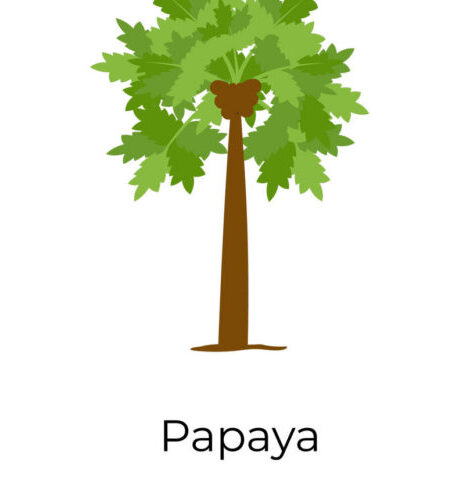
Harvesting Techniques and Determining Ripeness
Harvesting Techniques:
Knowing the right time to harvest your papayas is crucial to ensure optimal flavor and texture. While there are variations depending on the variety and growing conditions, there are a few general guidelines to follow. Firstly, observe the skin color of the fruit. Papayas typically change color as they ripen, with green turning to yellow or orange. However, this may not be the sole indicator, as some varieties remain green even when fully ripe. Therefore, it is important to consider other factors as well.
Next, gently press the papaya with your fingers. Ripe fruits will have a slight give and yield to pressure without being overly soft. Avoid applying too much pressure, as this can bruise the fruit. Additionally, take note of the aroma emitted by the papaya. A sweet and fragrant scent usually indicates ripeness. Lastly, consider the fruit’s overall weight. It should feel heavy for its size, which indicates a good sugar content and juiciness. By combining these factors, you can determine the optimal stage of ripeness for harvesting your papayas.
Determining Ripeness:
Once you have harvested your papayas, it is important to accurately determine their ripeness before consuming or storing them. Cut the fruit in half lengthwise and examine the flesh. Ripe papayas will have a uniform color throughout, ranging from creamy yellow to vibrant orange, depending on the variety. Any green or dark spots indicate under- or over-ripeness respectively. Additionally, the flesh should have a buttery consistency and a smooth texture, with a slight translucency. Avoid papayas that appear overly mushy or have a slimy texture, as this may indicate spoilage or over-ripeness. Alternatively, if the flesh is too firm and lacks flavor, the fruit may not be fully ripe. By carefully inspecting the flesh of the papaya, you can ensure that you are enjoying it at its peak ripeness.
Storing and Using Papayas in Various Recipes
Papayas are not only delicious but also versatile fruits that can be used in various recipes. When it comes to storing papayas, it is important to consider their ripeness. Fully ripe papayas should be stored in the refrigerator to prolong their freshness. However, if you have unripe papayas, it is best to store them at room temperature until they ripen. Once a papaya is cut, it should be wrapped tightly in plastic wrap or stored in an airtight container to prevent it from drying out. Properly stored papayas can last for up to one week, allowing you to enjoy their sweet and tropical flavor in your favorite recipes.
Now that you have stored your papayas, it’s time to explore the numerous ways you can use them in your culinary creations. One popular option is to use papaya in smoothies or fruit salads, adding a tropical twist to your refreshing beverages or refreshing a colorful salad. The natural sweetness and vibrant color of papaya make it a great addition to desserts such as sorbets, puddings, or even baked goods like muffins and cakes. Additionally, papayas can be incorporated into savory dishes like salsas, chutneys, or as a marinade for meats or seafood, adding a tangy and unique flavor profile. With its versatility and distinct taste, papaya can truly elevate any recipe and bring a taste of the tropics to your table.
Propagation Methods for Expanding Your Papaya Orchard
Propagation Methods for Expanding Your Papaya Orchard
Expanding your papaya orchard requires a reliable and efficient propagation method that will ensure the successful reproduction of healthy and vigorous plants. One of the most common propagation techniques for papaya trees is through seed germination. It is essential to select healthy seeds from fully ripe papayas, as this will greatly determine the quality and productivity of the resulting plants.
To begin the process, gently scoop out the seeds from the ripe papaya fruit and wash them thoroughly to remove any pulp or residue. Once cleaned, it is advisable to soak the seeds in a solution of warm water and fungicide for approximately 15 minutes. This will help eliminate any potential pathogens that may hinder germination. Following the soaking process, place the seeds in a moist paper towel or sphagnum moss and keep them in a warm location with consistent humidity. After about ten to fifteen days, you should observe the germination of the seeds, indicated by the emergence of tiny roots and shoots.
Best Practices for Maintaining a Productive Papaya Tree
Maintaining a productive papaya tree requires consistent care and attention. Proper pruning and training techniques are essential for optimal growth. Regular pruning helps to control the size and shape of the tree, promote air circulation, and improve sunlight penetration, which is crucial for fruit development. It is recommended to prune the papaya tree annually, removing any dead or diseased branches, as well as any suckers that may compete for nutrients. Training the main stem to a single leader ensures a strong and sturdy structure, supporting the weight of the fruit-bearing branches. As the tree grows, it is also beneficial to thin out the fruit clusters, allowing the remaining fruit to grow larger and ripen evenly. By following these best practices, you can help maintain the overall health and productivity of your papaya tree.
In addition to pruning and training, proper nutrition is imperative for a productive papaya tree. Regularly fertilizing the tree will provide the necessary nutrients for healthy growth and abundant fruit yield. Nitrogen, phosphorous, and potassium are the key elements required, and a balanced fertilizer with a ratio of 10-10-10 or 14-14-14 is often recommended. Applying the fertilizer evenly around the base of the tree, and avoiding direct contact with the trunk, will help prevent potential damage. It is important to follow the manufacturer’s instructions on the label for the appropriate dosage and frequency of application. By providing the papaya tree with the essential nutrients it needs, you can ensure its long-term vitality and productivity.
Common Myths and Misconceptions About Growing Papayas
When it comes to growing papayas, there are several common myths and misconceptions that can hinder your success as a gardener. One such myth is that papaya trees need constant sunlight throughout the day. While it is true that papayas thrive in sunny conditions, they can also tolerate partial shade. In fact, providing some shade during the hottest part of the day can actually benefit the plant and prevent sunburn on the leaves. It is important to strike a balance between sunlight and shade to ensure optimal growth.
Another misconception is that papayas are extremely sensitive to cold temperatures and cannot be grown in cooler climates. While it is true that papayas prefer tropical and subtropical climates, there are certain varieties that have been bred to withstand colder temperatures. For example, the “Mountain Papaya” variety is known for its cold hardiness and can tolerate temperatures as low as 32°F (0°C). Additionally, protecting young papaya plants with frost blankets or planting them in sheltered areas can help mitigate the effects of cold weather. It’s important to research the specific variety of papaya that is suitable for your climate and take appropriate measures to protect the plant from extreme temperatures. By debunking these common myths, you can approach papaya cultivation with confidence and increase your chances of a successful harvest.
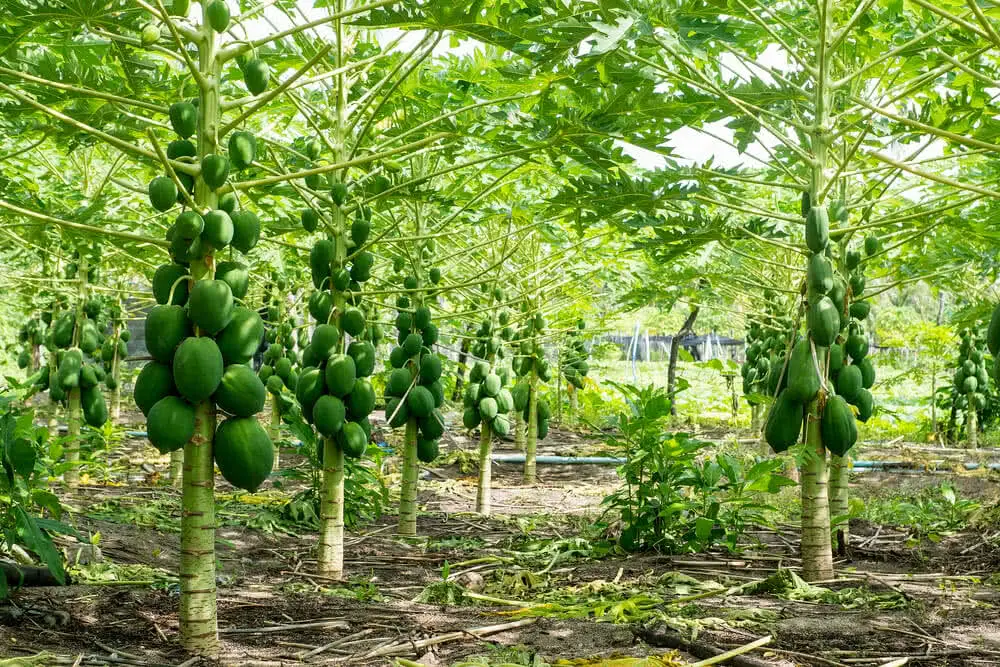
Success Stories and Inspiring Experiences with Papaya Cultivation
Papaya cultivation has been a source of success and inspiration for numerous gardening enthusiasts worldwide. From small scale growers to large commercial farms, the stories of triumph in papaya cultivation serve as a testament to the rewarding nature of this endeavor.
One inspiring success story comes from a farmer in southern Florida who turned an abandoned plot of land into a thriving papaya orchard. With careful selection of the right papaya variety for the local climate and a focus on preparing the soil with nutrient-rich compost, the farmer was able to achieve exceptional fruit yield. By implementing proper watering and irrigation techniques, coupled with regular fertilization, the papaya trees flourished, surpassing the farmer’s expectations. The success of this venture not only brought financial prosperity but also rejuvenated the community, as neighboring farmers were motivated to explore the potential of papaya cultivation in the region.
Similarly, another enthusiast in the Philippines shared their inspiring experience with papaya cultivation. With a passion for organic farming, this farmer embraced a holistic approach that prioritized the well-being of both the papaya trees and the surrounding ecosystem. Through the integration of natural pest control methods and sustainable farming practices, the farmer was able to minimize the use of chemical pesticides and create a harmonious balance within the orchard. The result was not only a successful papaya harvest but also a profound sense of accomplishment in contributing to a healthier environment. This inspiring journey serves as a reminder that papaya cultivation can not only be financially rewarding but also a means to promote sustainable and eco-friendly farming practices.
As these success stories demonstrate, papaya cultivation has the potential to be a fulfilling and prosperous endeavor for gardening enthusiasts. By harnessing the knowledge and expertise gained from years of research and experience, individuals can overcome challenges and achieve remarkable results in their papaya orchards. Whether it be in reclaiming abandoned land or fostering sustainable farming practices, the cultivation of papayas offers a platform for innovation, growth, and inspiration.
Please do watch video!
What are some common pests that can affect papaya trees?
Common pests that can affect papaya trees include aphids, mealybugs, spider mites, and fruit flies.
How do I determine if a papaya is ripe and ready for harvest?
A ripe papaya should have a slightly soft texture when gently pressed. The skin may also start to turn yellow or orange, depending on the variety.
Can I grow papaya trees in a colder climate?
Papaya trees thrive in warm tropical climates and are sensitive to colder temperatures. However, there are some cold-hardy varieties that can be grown in slightly cooler regions with proper protection.
Can I grow papayas in containers?
Yes, papayas can be grown in containers, but it is important to choose a dwarf variety and ensure that the container provides enough space for the roots to grow. Regular pruning and fertilizing are also necessary for container-grown papayas.
How often should I water my papaya tree?
Papaya trees generally require frequent watering, especially during hot and dry periods. It is recommended to water the tree deeply once or twice a week, allowing the soil to dry out slightly between waterings.
Are papayas susceptible to any specific diseases?
Papayas can be susceptible to diseases such as root rot, powdery mildew, and papaya ringspot virus. Proper care and regular monitoring can help prevent and control these diseases.
Can I eat papaya seeds?
Yes, papaya seeds are edible and have a slightly peppery taste. They can be used in various recipes or consumed as a digestive aid due to their high fiber content.
How can I protect my papaya trees from strong winds or storms?
To protect papaya trees from strong winds or storms, you can stake or brace the tree to provide additional support. It is also advisable to prune any weak or damaged branches that could potentially break during a storm.
How long does it take for a papaya tree to bear fruit?
Papaya trees typically start bearing fruit within 6 to 12 months after planting, depending on the variety and growing conditions.
Can I use papayas that are not fully ripe?
Yes, you can use papayas that are slightly underripe. They can be used in savory dishes or in recipes that call for unripe fruit, such as pickles or chutneys.

Nicole Burke is a dynamic writer at SouthElMonteHydroponics, fueled by her passion for horticulture and environmental sustainability. Armed with a degree in Environmental Science from a renowned institution, Nicole’s expertise lies in hydroponic gardening, organic farming, and biodiversity conservation. Her insatiable curiosity and love for nature drive her to explore innovative techniques in hydroponics, seeking to revolutionize the way we grow crops in urban environments. Nicole’s writing reflects her deep commitment to promoting eco-conscious practices and fostering a deeper connection between humans and the natural world. Through her engaging storytelling, she inspires others to embrace sustainable living and harness the power of hydroponics for a greener future.

